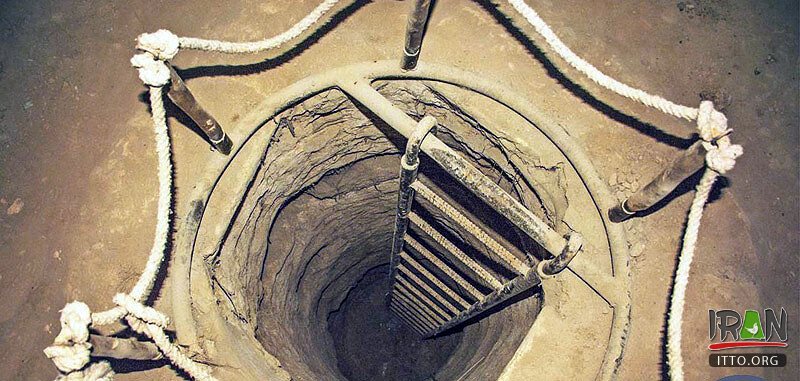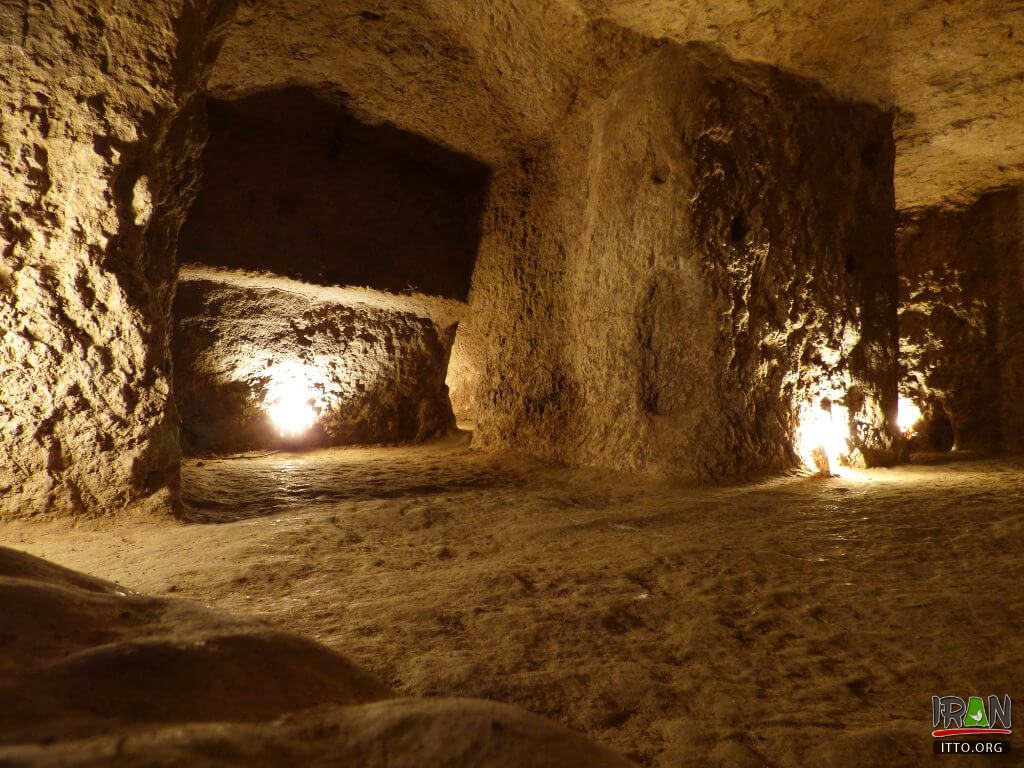Just north of Kashan near Aran va Bidgol, in the small town of Nushabad (Noosh-Abad), lies a sprawling underground city. Despite its impressive scale, the ancient buried shelter was completely unknown until a decade ago, when an oblivious resident stumbled upon a tunnel while digging a sewage ditch in his home.
What was discovered was an extensive, 1500-year-old underground city, set between 3 to 18 meters (10 to 60 feet) deep. The labyrinthine network was comprised of three stories of tunnels, chambers, air ducts, staircases, canals, and booby traps. It’s considered a marvel of ancient architecture and engineering.

It is theorized that when hostile forces would raid the area above, residents of ancient Noushabad and various other local villages would seek shelter within the underground network of Ouyi. Once inside, the city provided quite a few other defensive capabilities.
Construction of this man-made subterranean city, called Ouee (or Ouyi), dates back to the Sasanian (or Neo-Persian) Empire that ruled from 224 to 651. Inhabitants would dig underground chambers as hideout spots for women, children, and the elderly in the event of an attack by foreign invaders.
Over the years, the individual chambers were amalgamated, and air ducts, water pipes, storage spaces, and toilets were all built—creating a sustainable underground city that was used as a refuge during times of war. Each family had their own room of sorts, with a tunnel running down the length of these rooms, similar to a hotel hallway.
Structure:The city has lots of unique attributes. The first thing visitors may notice are the various shapes, sizes and pathways of each corridor. The whole city is a labyrinth of rising and falling pathways which give the city some unique properties.
The city of Ouyi has a unique and ancient ventilation system designed to bring in fresh air, no matter how deep you go. The ascending and descending pathways allow the free flow of air throughout the structure.

Construction of this man-made subterranean city, called Ouee (or Ouyi), dates back to the Sasanian (or Neo-Persian) Empire that ruled from 224 to 651.
However, what makes Ouyi one of Kashan’s top attractions is the city’s defense capabilities. The complicated network of rooms, halls and pathways are connected by small hatches, big enough to allow only one standing person at a time. Some paths can only be accessed by crawling.
It is theorized that when hostile forces would raid the area above, residents of ancient Noushabad and various other local villages would seek shelter within the underground network of Ouyi. Once inside, the city provided quite a few other defensive capabilities.
While traveling inside, citizens would need to travel in a single-file line. The first person in the line would light the wall-mounted torches, while the last person in line would turn off each successive torch, thus confusing the enemy. Furthermore, because of the U-shaped nature of the tunnels throughout different levels, invading soldiers would be forced to attack uphill towards the end of each tunnel. This gave the defending soldiers enough time and elevation advantage to dominate their enemies.


